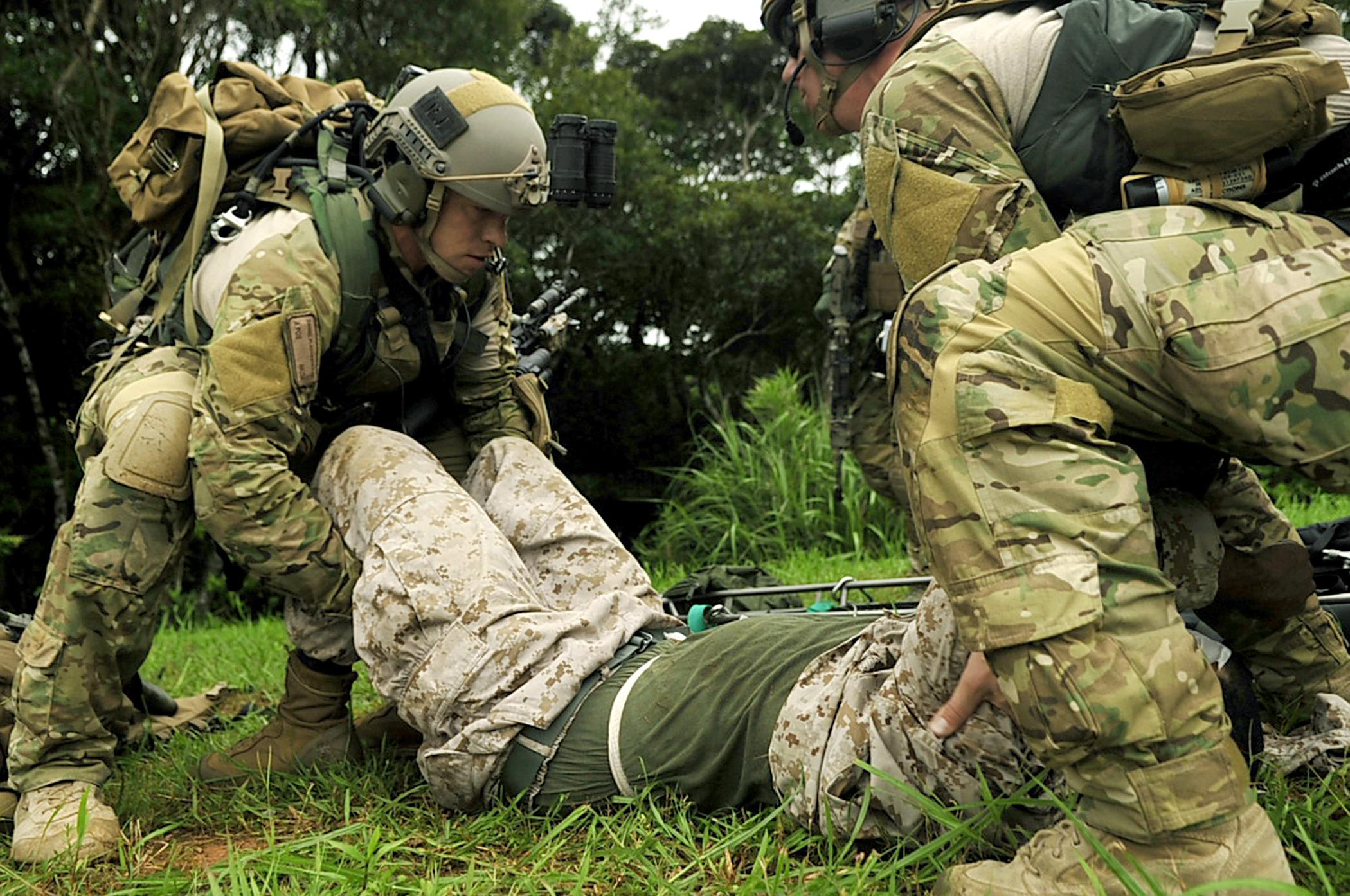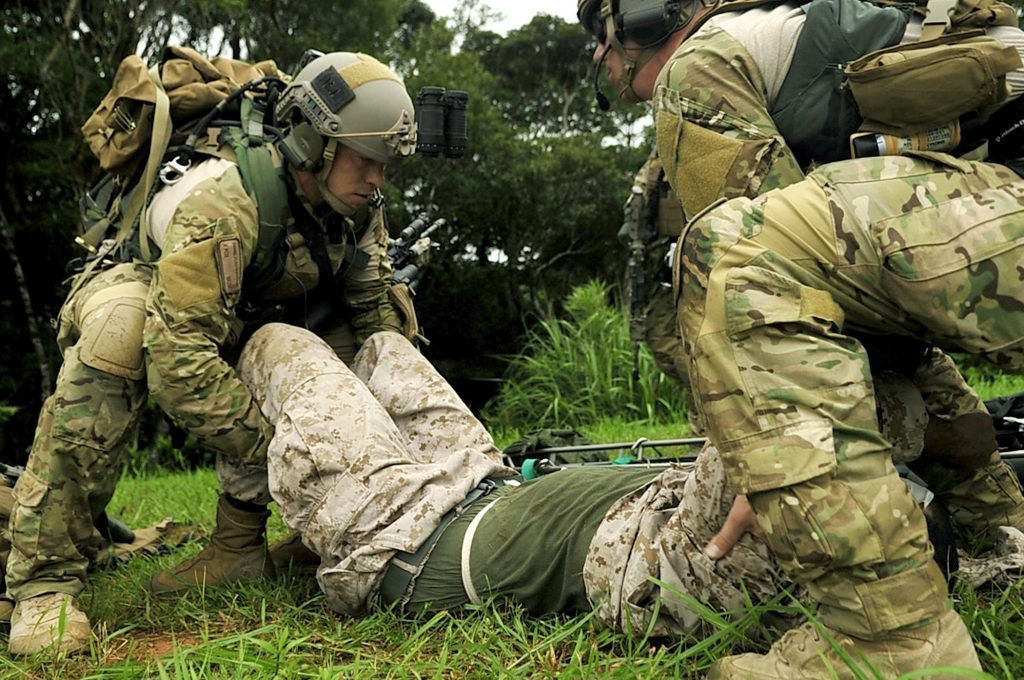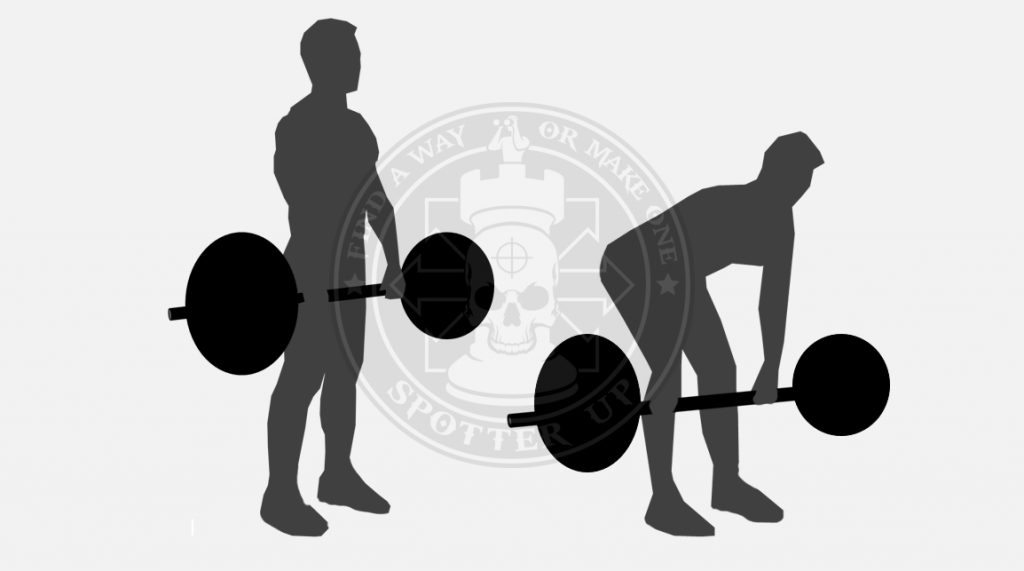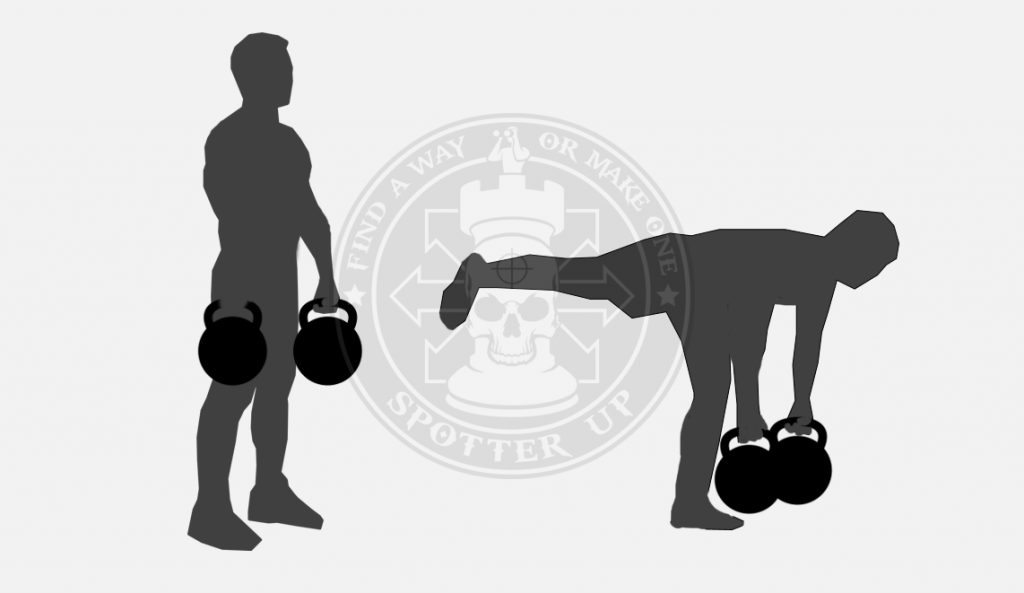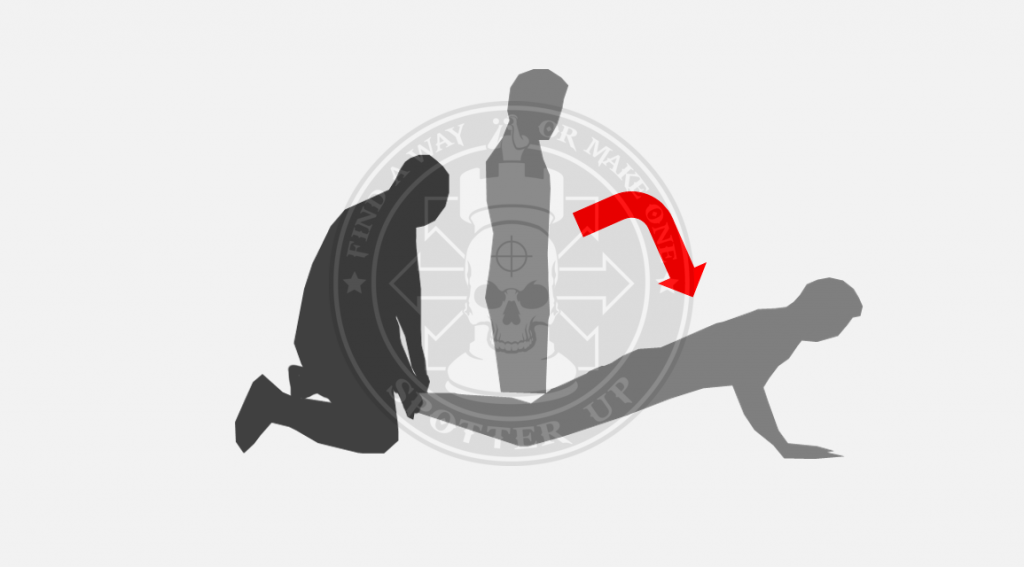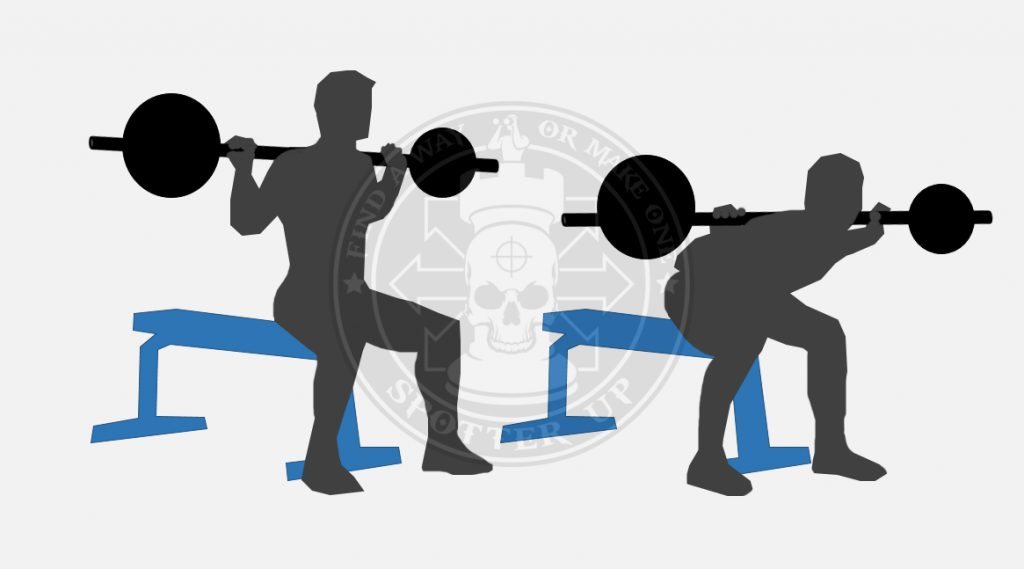When it comes to strengthening exercises for the hamstrings, a more accurate description would be “Good, Better, and Ugly”. Most hamstring injuries occur during the late-swing phase of gait, as the hamstrings eccentrically contract to help slow down the leg. Any strengthening that can be done in an eccentric manner can help prevent injury.
Straight-leg/Single-leg deadlifts
Straight-leg Deadlifts and Goodmornings are great exercises to strengthen the hamstrings and tendons, as they allow strengthening over both of the joints that the hamstrings cross (the hip and the knee). This allows you to train the hamstrings in positions that best approximate the motions of running. Click here to learn how to perform straight-leg deadlifts with proper form.
Single-leg dual kettlebell Romanian deadlift
The true nature of the gluteus maximus when it moves into hip hyperextension (which is where you “lock the leg” if you do it right) is to externally rotate the femur. From a standing position, simply squeeze your glutes as hard as possibly and you’ll feel your legs turn outward a bit and the feet trying to “screw” outward. Why fight this natural tendency?
Mayer et al. (2002) found that back extensions with the hips externally rotated (feet turned out) activated 39% more glute max than hips internally rotated (feet turned in). The glute max activates better with the feet turned out a bit, and in sports, the glute max influences femur, tibia and foot mechanics, so it needs to be strong in external rotation thereby increasing balance, increasing hip stability, increasing hip extensor strength, and hopefully increasing power production.
Nordic hamstring exercises (“Good”)
Nordic hamstring curls only strengthen across the knee joint, as the hip is held in a fixed position. Nonetheless, they have been shown to prevent injuries. The Nordic Hamstring Exercise is performed by anchoring the lower legs and slowly leaning forward from a tall kneeling position. The individual tries to control their lean until they reach a “tipping point” when they use their arms (not face!) to break their fall.
Concentric hamstring curls (“Ugly)
These have actually been shown to raise susceptibility of injury to the muscle during eccentric contraction, since they reduce the number of sarcomeres in the fibers (resulting in the muscle operating best at a shorter length). If you will be running or sprinting, you want your hamstrings to work optimally at all lengths! Avoid traditional concentric hamstring curl exercises. If you can’t break your addiction to the hamstring curl machine at the gym, you can still focus on the eccentric phase by raising the weight with both legs (should feel easy), and then slowly lowering with one leg.
The Journal Of Athletic Training (JAT) conducted a study that revealed the following results.
Objective:
Hamstring injuries can be quite debilitating and often result in chronic problems. Eccentric muscle actions are often the last line of defense against muscle injury and ligament disruption. Traditionally, the focus of hamstring strength rehabilitation has been on concentric muscle actions. The purpose of our study was to compare hamstring muscle strength gains in concentric and eccentric hamstring strength training.
Results:
The concentric group improved 19%, while the eccentric group improved 29%. The control group subjects did not show any significant change over the 6 weeks. In addition, there were improvements in eccentric isokinetic peak torque/ body weight ratios at both 60 °s and 180° from pretesting to posttesting in the eccentric training group only.
Conclusions:
Our results demonstrate the effectiveness of isotonic strength training on the development of hamstring muscle strength. More important is the dramatic effect of eccentric strength training on overall hamstring muscle strength, both isotonic and isokinetic. Clinicians should consider using eccentric hamstring strengthening as part of their rehabilitation protocols for hamstring and knee injuries.
Seated Good Morning
Place a barbell behind your neck as you would for a back squat while sitting with your legs straddling a bench, knees bent and feet flat on the floor in farther forward than your knees. Set your back tightly in a complete arch, locking it in position with tight abs. Hinge at the hip, maintaining the back arch, and bend forward as far as you can without losing the arch in the back. When you reach the bottom, reverse the motion, being sure to not let the arch soften, and return to the original upright position.
Conclusion The seated good morning primarily strengthens the isometric position of the back arch used in the snatch, clean, squat and related exercises to improve the lifter’s stability, power transfer and safety. Secondarily, it strengthens the glutes and hamstrings, and can improve hip extensor flexibility. The seated good morning is somewhat more specific to the squat position and starting position of the snatch and clean as opposed to the pulling position than the conventional good morning.
References:
1) Arnason, A., Andersen, T.E., Holme, I., Engebretsen, L. & Bahr, R. (2008) Prevention of hamstring strains in elite soccer: an intervention study Scandanavian Journal of Medicine and Science in Sports, 18 (1), 40-48
2) Brocket, C.L., Morgan, D.L. & Proske, U. (2004) Predicting hamstring strain injury in elite athletes Medicine and Science in Sports Exercise, 36 (3), 379–387.
3) Mjolsnes, R., Arnason, A., Osthagen, T., Raastad, T., & Bahr, R. (2004) A 10-week randomized trial comparing eccentric vs. concentric hamstring strength training in well-trained soccer players Scandanavian Journal of Medicine and Science in Sports, 14, 311-317.
4) Catalyst Athletics, http://www.catalystathletics.com/exercise/184/Seated-Good-Morning/
5) Journal of Athletic Training, J Athl Train. 1998 Jul-Sep; 33(3): 216–221.
(Image courtesy of US Air Force) Senior Airmen Daniel Flechsenhaar (left) and Andrew Nichols move a simulated wounded Marine on to a litter during a joint combat training exercise July 28, 2010, at Kadena Air Base, Japan. The Airmen are pararescuemen from the 31st and 33rd Rescue Squadrons. (U.S. Air Force photo/Senior Airman Amanda N. Grabiec)
